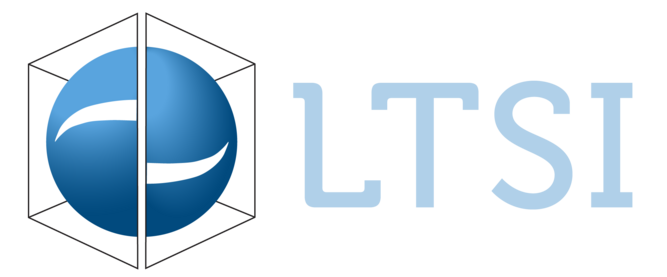Epilepsy is a neurological disease that affects approximately 1% of the population. It is the fourth most common neurological disorder and affects people of all ages. Epilepsy is usually characterized by repetitive seizures, called ictal periods, whose frequency and duration are variable, which are the results of excessive and abnormal cortical nerve cell activity in the brain. For the majority of patients (about 70%), seizures can be controlled by taking antiepileptic drugs, which can contribute to decrease the number and/or duration of seizures. Unfortunately, antiepileptic medication may cause some side effects such as abdominal pain, double vision, severe behavior disturbance, etc. Now, for about 30% of patients, medication is not effective or is intolerable (due to the side effects of the medication), and in this case, epilepsy surgery could be an option. For these patients, the main question is to determine which areas of the brain should be taken off such that seizures are removed or at least highly attenuated under the constraint that post-surgical deficits are limited. Therefore, the problem is to define with accuracy, from surface ElectroEncephaloGraphic (EEG) observations, the epileptogenic zone that is responsible for seizure onset. Indeed, the organization of the epileptogenic zone often corresponds to that of a network of neuronal ensembles distributed in distant structures and responsible for the initiation and the propagation of epileptic activities. Due to this distribution, the localization and the characterization of epileptogenic networks are a very difficult task and addressing it is a real challenge. Surface EEG recordings are not invasive and provide a powerful way for a reliable inference of brain networks. But a major issue in this inference is how to recover original sources from surface observations and to identify their connections. Brain connectivity is thus crucial to elucidate how neurons and neural networks process information (Sporns, 2004 ; Friston 2011). There are three types of brain connectivity: structural connectivity which is viewed as a network of physical or structural (synaptic) connections linking sets of neurons or neuronal elements, functional connectivity which refers to statistical dependencies between brain regions that share functional properties, and effective connectivity which refers to information flows in a network. These three types of connectivity are obviously linked, and their joint analysis allows a better understanding of brain structures and functions.
In this project, we are mainly concerned by effective connectivity which describes the influence from one neuronal system (such as individual neuron, neuronal population, or anatomically segregated brain region) to another one, and possibly reflects the causal relation between different systems or ensembles of neurons. The study of effective connectivity helps us in the analysis of the dynamic information processing (Yang, 2013 ; Zhu, 2015 ; Xiang, 2017 ; Chantal, 2021).
Thus, the goal of this Ph. D. work is to define, based on EEG recordings, dynamical graphs composed of vertices (neurons or brain regions), and edges (relative dependencies between neural elements). This Ph. D. work comprises three parts: (i) First, since we are convinced by the potential of frequential approaches and their added values in effective connectivity [van Mierlo, 2013], as well as that of nonlinear approaches eventually coupled with the former ones, we plan to investigate more deeply the development of novel frequency-based approaches, (ii) second, the question of localizing brain
sources together with detecting connectivity relationships among them using surface EEG recordings will be considered either in a sequential way or in an integrated form (“all-in-one” approach) and (iii) third, tests will be conducted on both simulated data based on external models (such as vectorial autoregressive models, dynamically coupled systems) and physiology-based ones (simulating the activity of neuronal distant populations), before being applied on real epileptic signals.
REFERENCES
[Chantal, 2021] P.A. Chantal, A. Karfoul, A. Nica, R. Le Bouquin Jeannès, "Dynamic brain effective connectivity analysis based on low-rank canonical polyadic decomposition: Application to epilepsy", Medical & Biological Engineering & Computing, https://doi.org/10.1007/s11517-021-02325- x, 2021.
[Friston, 2011] K.J. Friston, "Functional and effective connectivity: a review", Brain Connectivity, vol. 1, no. 1, pp. 13–36, 2011.
[Sporns, 2004] O. Sporns, D.R. Chialvo, M. Kaiser, and C.C. Hilgetag, “Organization, development and function of complex brain networks“, Trends in Cognitive Sciences, vol. 8, no. 9, pp. 418-425, 2004.
[van Mierlo, 2013] P. van Mierlo, E. Carrette, H. Hallez, et al., “Ictal-onset localization through connectivity analysis of intracranial eeg signals in patients with refractory epilepsy“, Epilepsia, 54(8):1409–1418, 2013.
[Xiang, 2017] W. Xiang, A. Karfoul, H. Shu, R. Le Bouquin Jeannès, “A local adjustment strategy for the initialization of dynamic causal modelling to infer effective connectivity in brain epileptic structures”, Computers in Biology and Medicine, doi: 10.1016/j.compbiomed.2017.03.006, 84, pp. 30-44, 2017.
[Yang, 2013] C. Yang, R. Le Bouquin Jeannès, J.J. Bellanger, and H. Shu, “A new strategy for model order identification and its application to transfer entropy for EEG signals analysis“, IEEE Trans. on Biomedical Engineering, vol. 60, n°5, 1318-1327, 2013.
[Zhu, 2015] J. Zhu, J.J. Bellanger, H. Shu, R. Le Bouquin Jeannès, “Contribution to transfer entropy estimation via the k-Nearest-Neighbors approach“, Entropy, vol. 17, Issue 6, pp. 4173-4201; doi:10.3390/e17064173, 2015.
Skills
-
- Solid knowledge in signal processing
-
- Effective communication skills, both written and oral in English
-
- Programming proficiency in Matlab/Python and C++
-
- Good communication and autonomy
-
- Experience in biomedical engineering/electrophysiological signals would be appreciated
Dates
-
- Job starting: October 2021
-
- Duration: 3 years contract
Documents to provide
- CV + cover letter + academic transcript (master/engineer)
Funding
- Ministry scholarship.
Contacts
R. LE BOUQUIN JEANNES & A. KARFOUL
LTSI (Laboratoire Traitement du Signal et de l'Image) - INSERM U1099
Université de Rennes 1, Campus de Beaulieu
35042 Rennes Cedex, France
Tel. 06 83 22 22 83
Email : Regine.Le-Bouquin-Jeannes@univ-rennes1.fr, ahmad.karfoul@univ-rennes1.fr
| Fichier attaché | Size |
|---|---|
| version imprimable | 186.86 Ko |
